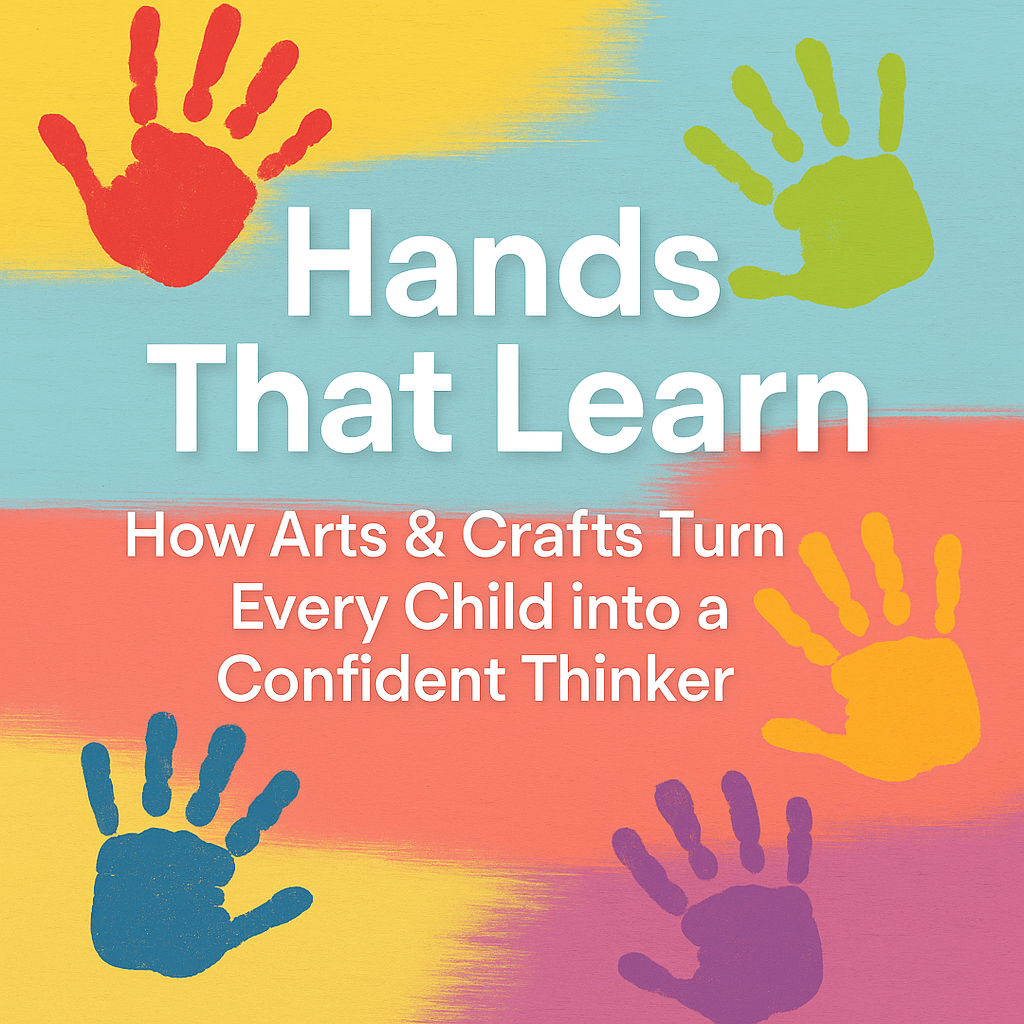
🎨 The Beauty of Learning Through Hands🖐
In a world filled with screens and words, sometimes the most powerful lessons begin with a paintbrush, a glue stick, and a curious pair of hands.
Arts and crafts aren’t just about making “cute” things — they’re about making connections.
Every time a child folds paper, threads beads, or paints a pattern, something incredible happens: their brain learns to think, feel, and understand in new ways.
For children of all abilities — including those with learning or developmental differences — this kind of hands-on creativity opens doors that traditional learning sometimes cannot.
When kids engage in crafting, their hands become teachers.
They explore textures, shapes, and colors, translating ideas into action.
This multisensory process strengthens:
But the magic goes deeper.
For children with disabilities — whether physical, sensory, or cognitive — arts and crafts offer a level playing field. Everyone works differently, yet everyone creates something meaningful.
🪶 A child who struggles to speak can still tell a story through color.
🎵 A child who can’t yet write can show rhythm with shape and pattern.
🌻 A child with limited mobility can shine through adaptive art tools and group collaboration.
✨Art doesn’t judge ability. It celebrates possibility.
Art engages both sides of the brain — the creative right and the logical left.
When children combine imagination with structured steps (like folding, counting, or layering materials), they practice focus, patience, and executive function — the very skills that fuel learning in reading, math, and science.
For kids with disabilities, these activities become natural therapy — improving attention span, memory, and confidence without the pressure of grades or performance.
🧠 Art is fun, yes — but it’s also therapy, learning, and self-discovery rolled into one.
Every finished craft is more than a product — it’s a proof of ability.
When a child sees what their hands have made, no matter how simple, they feel proud. That feeling of “I did it!” boosts self-esteem and resilience — two key ingredients for lifelong learning.
For many children with special needs, this sense of visible success helps them approach other learning challenges with courage.
It’s not about perfection — it’s about participation, progress, and pride.
🎨 Art gives kids a way to succeed without words, numbers, or grades — just pure imagination.
At Penholic, we believe creativity belongs to every child.
Arts and crafts sessions can be adapted for all learners:
🖍️ Large-grip tools for small or limited hands
🎨 Sensory materials for tactile exploration
🎵 Rhythm, story, and sound for auditory learners
👫 Collaborative crafts that foster empathy and teamwork
This inclusive approach doesn’t just teach art — it teaches empathy, patience, and cooperation.
When kids create together, they learn that everyone has something beautiful to contribute.
Arts and crafts aren’t a break from learning — they are learning.
They turn lessons into experiences, frustration into focus, and difference into strength.
Because when every child is given the chance to create, they’re not just making art — they’re making confidence, curiosity, and connection.
And that’s the kind of masterpiece that lasts a lifetime. 🎨💛
At Penholic Little Makers, we celebrate creativity in all its forms — from wiggly paintbrushes to determined little fingers.
Our inclusive arts and STEAM sessions nurture every child’s unique way of learning and expressing joy.
📧 Learn more or enroll: support@penholic.com
🌈 Follow us: @PenholicAcademy | #LittleMakers #HandsThatLearn